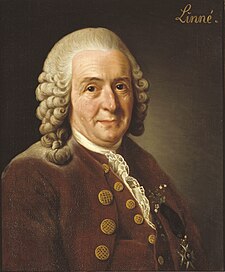
Linnaeus was classifying organisms based on what they looked like, what characteristics and other similarities they appeared to have in common. This made it difficult to classify organisms that seemed to share characteristics with both kingdoms that Linnaeus proposed, Plants and Animals. For example, fungi including mold and mushrooms do not move (or do they?) so they seem to be plants but, unlike plants, they do not make their own food. Fungi live off of the nutrients they absorb from dead or living plants and animals.
Instead of trying to organize organisms based on the characteristics they appeared to have in common, as the evidence for evolution mounted, the goal of taxonomy became showing how
organisms are actually related, ancestrally. This is called Phylogeny (meaning "tribe-source").
Furthermore, when scientists started to study cells in more detail, they found a new and crucial difference between groups of organisms. Some organisms have cells with a nucleus and others have cells with no nucleus. The former are called eukaryotes and the latter are called prokaryotes. Most eukaryotes are multicellular ("many-celled") beings while most prokaryotes are single-celled or unicellular.
Researchers discovered that they could also organize species based on their rRNA or Ribosomal RNA, an important part of what cells use to grow and reproduce.

rRNA is similar among closely related species and differs more significantly the farther apart species are from each other ancestrally speaking. By studyingn the rRNA of organisms, biologists were able to recatagorize them into three major groups or domains: the Bacteria, another group of prokaryotic, single-celled organisms called the Archaea, and the Eukaryotes (the domain Eukarya). Domain was added then as another taxonomic level. One of the most interesting facts I read about in this chapter of my text is that, based on rRNA, fungi is much more closely related to animals than to plants.

Sidenote: Does this mean that, as a vegetarian, I shouldn't eat mushrooms? Hmmmm.


No comments:
Post a Comment